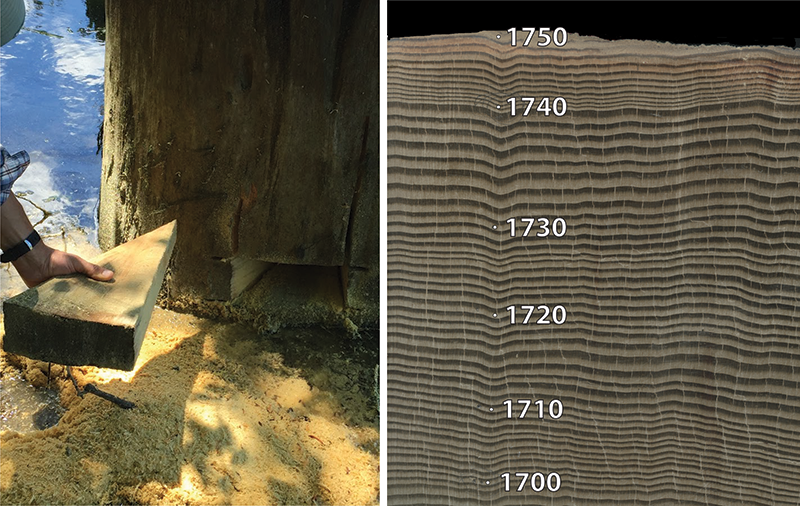Correlating Landslides and Earthquakes in Cascadia
HERE is a longish article about how to date landslides and see whether the landslides are caused by earthquakes. And so far they have not found a landslide with the same age as the great earthquake of 1700.
The technique involves dendrochronology. Trees which died as the result of drowning in lakes formed by landslides are dated and their outermost ring gives the date of the landslide. A rather nice way to get a specific date.
 | ||||||
Fig. 1. (left) This slab sample from a drowned tree (visible in the background) in Klickitat Lake in Oregon provides a record of the years before a landslide dam formed this lake, inundating the forest. Slabs with a sufficient number of tree rings can be correlated to regional tree ring records. (right) This correlation is evident from the thinner rings beginning in 1739, shown in this close-up view of tree rings within the slab. Thinner rings document a profound growth slowdown, characteristic of Douglas fir trees throughout Cascadia. The outermost increment that formed immediately under the bark shows that this tree died in 1751. Similar records from other drowned trees could be linked to landslides triggered by great (~M9) earthquake that shook the region in 1700. Credit: Will Struble
No comments:
Post a Comment